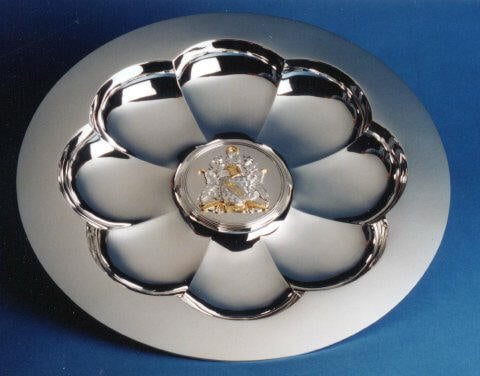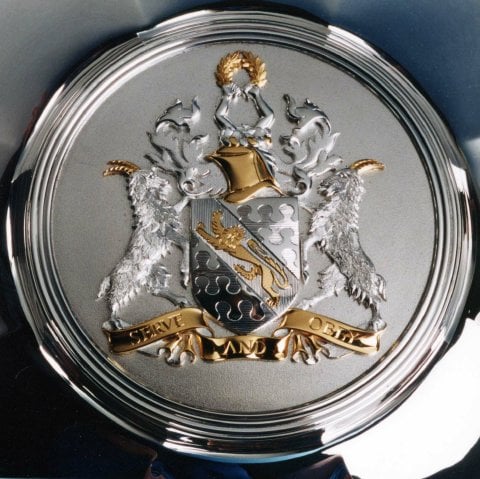Sorry this is long, but felt I needed to add my mental state for
full impact.
Today I cut out a dog brooch. It’s out of 24g red brass. It has two
layers. Bottom is full and the top is partially cut out (to be
filled in later with resin). So I sanded them, cleaned them with
alcohol and then fluxed them good. I took my yellow solder (from Rio)
and sanded it, cleaned it and pounded it thinner (as per some
recommendation I read in a book). Then I cut my solder and added them
to my piece. I put the two pieces together and added a little binding
wire to keep them from floating apart during soldering. So I take my
smiths little torch propane/oxygen setup and began my soldering. I
heated the metal on the bottom (full piece) for quite awhile. Moved
to the top and heated the cut out piece. Then went back to the
bottom. This back and forth went on for awhile. The top turned
cherry red, BUT the solder didn’t melt. I then put it on a charcoal
block hoping it would retain some heat on the bottom to help me.
Still no luck. Enough pieces melted to stick the 2 parts together but
not enough to really solder the thing. I also partially melt the dogs
ear on top. Then I took a break to swear and eat a peanut butter
sandwich.
Thusly fortified with some of the essential food groups I decided to
pickle my brooch and reflux and try again. After pulling it out of
the pickle, I notice it looked rusty. I’m thinking it looked that way
before pickling but hey I was too busy swearing. :-). I try heating
again and it doesn’t budge. I think to myself perhaps that solder
doesn’t work well. I have had a few times it didn’t melt. But others
it did just fine. I look in the Rio catalog and notice the melting
point is medium-high for this solder. So I decided to cut out the
design again and try silver low solder thinking this will fix my
problem. 3 saw blades later (did I mention this was a 3-saw-blade
project?) I have my new dog. Top and bottom. I once again I do the
right thing. Dog: Sand, clean, flux. Solder: sand, clean, pound flux.
This time I use low temp silver. I heat and I heat. Some of it does
melt this time. But I still have little hold outs. I also try upping
the heat on my smiths little torch. I increase propane and oxygen
alternately until the flame looks bigger (thinking all this time
that I really need to find some more literature on this torch. It
came with woefully little. I guess this torch isn’t for those of us
just learning the ropes). The flame cuts out repeatedly when moving
from the top to the bottom and visa versa. Much swearing as I relight
and readjust. I wonder if this is a not enough 02 psi problem?
Apparently the torch still isn’t hot enough. I stop. Decide enough is
enough. I notice that the red rusty powder is on the brass again. I
look through the archives and read something about brass depletion
and copper left behind. Guess this is what is happening. Guessing
it’s because the flux runs out before the marathon torch session
does. I take some high grit paper and proceed to get most of it off.
It’s now in the pickling pot. I’m thinking it’s time for a nice glass
of Shiraz (thank you Australia).
What is going on here and what can I do to fix it? This is a great
brooch and I know I’m going to get lots of call for it, but if I
can’t solder it, it’s a problem.
Thanks
Lisa Fowler
LL Fowler Designs
Fort Collins, CO 80526
USA
@LisaF

